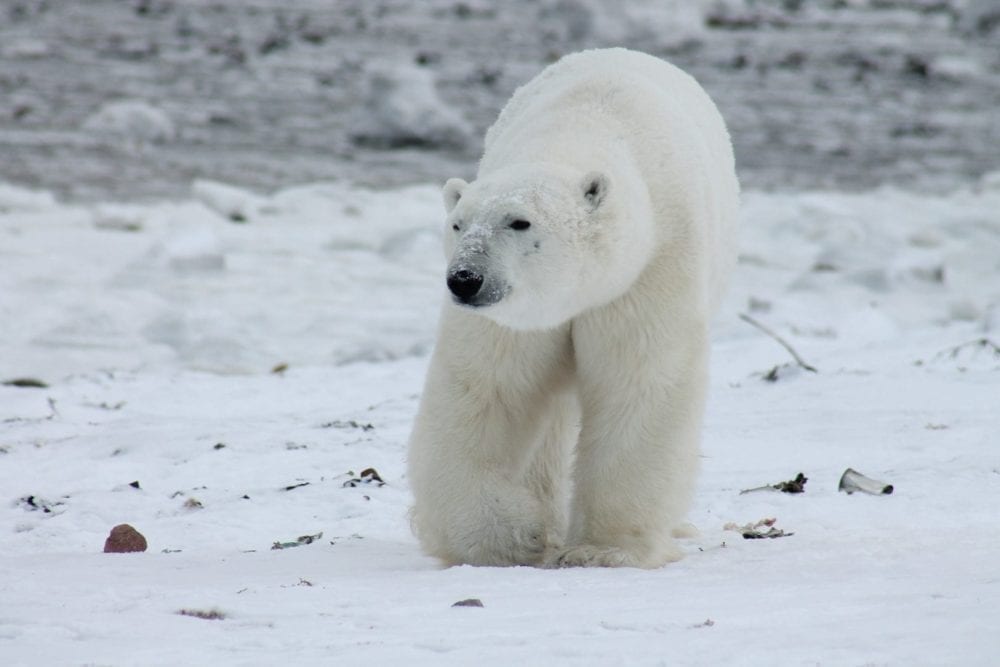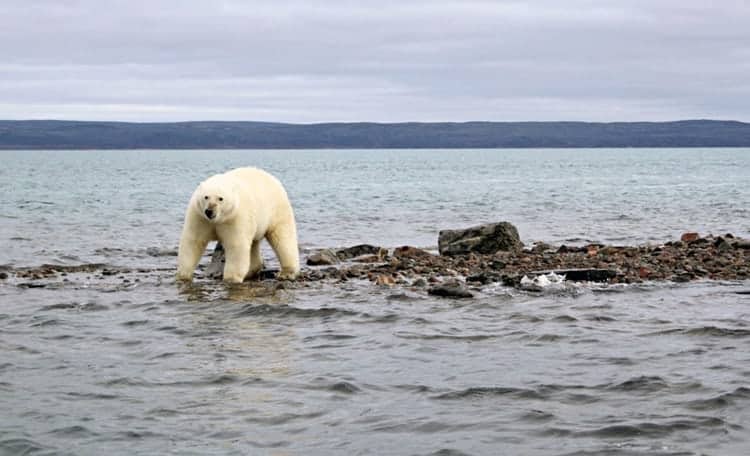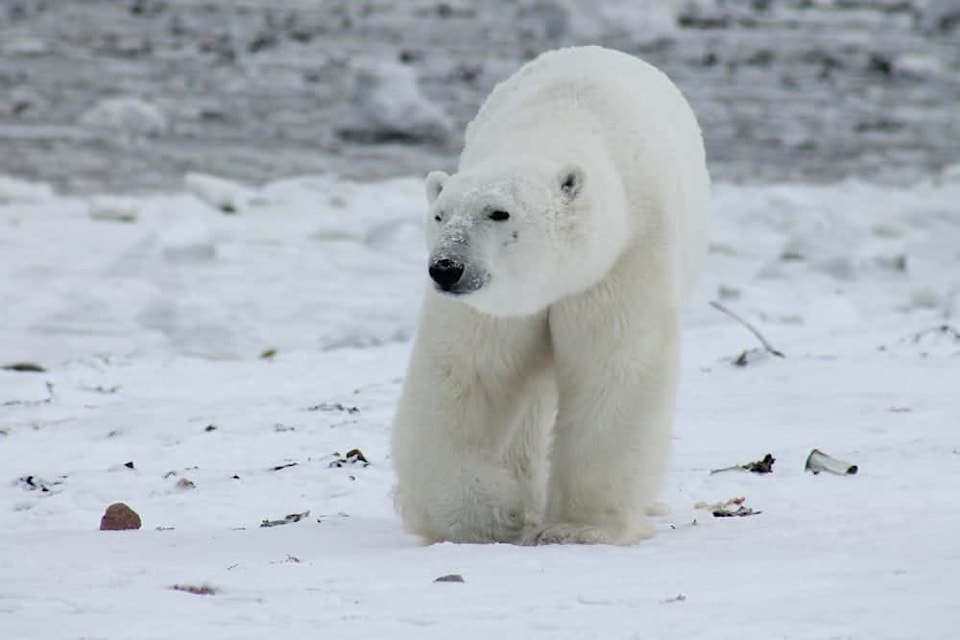Many polar bear populations could be extinct or on the verge of extinction in 80 years if greenhouse gases rise at a high rate, a new scientific study by six researchers predicts.

Pixabay photo
Under that scenario, global warming and disappearing sea ice would increasingly deprive polar bears of food sources, particularly seals, and the predators' periods of fasting would consequently grow longer and longer until unsustainable, the report's authors state.
Some sub-populations could die off sooner than others, with bears in the southern Hudson Bay and Davis Strait possibly facing their demise within two decades if greenhouse gas emissions rise rapidly, forecasts the study, titled Fasting Season Length Sets Temporal Limits for Global Polar Bear Persistence. A few high-Arctic sub-populations may survive beyond the year 2100 under such conditions, the researchers conclude.
The analysis, published July 20, examined 13 of the 19 polar bear sub-populations in the Arctic and sub-Arctic.
If greenhouse gas emissions are contained moderately then there is “definitely a realistic chance to preserve polar bears, but likely not across their entire current range,” particularly in the southern edge of their range, said Peter Molnar, assistant professor in the Department of Biological Sciences at the University of Toronto, one of six authors of the study, which includes input from academics and researchers at atmospheric institutes.
Nunavummiut in several communities have, over the past few years, reported seeing more polar bears in the vicinity of communities than in the distant past.
Molnar said he has heard such reports himself and he believes them, but “seeing more bears does not necessarily mean that there are more bears,” he said.
“Longer ice-free periods mean bears will be forced to spend more time on land, during which they have greater opportunity to wander around in places they previously didn’t visit,” said Molnar. “Also, with shorter on-ice periods, increasing numbers of bears will be hungrier when they come ashore, which will prompt them to search for alternative food sources, including in human settlements. This could lead to aggregations of bears, an increasing number of observations, and an increased risk to humans, even if population numbers may have fallen.”
He added that the researchers didn't attempt to estimate the existing populations in each region, but instead studied the physiology of bears and how their existence could be jeopardized by being forced to fast for lengthier periods due to climate change.
Earlier this year, Norwegian conservationist and author Ole J. Liodden asserted that polar bears are not
only threatened by climate change but by selective hunting for size and fur quality.
Last October, Environment Minister Joe Savikataaq announced that Nunavummiut hunters can use tags to kill as many female as male bears. The previous ratio was one female for every two males killed.
Savikataaq's decision was based on a recommendation from the Nunavut Wildlife Management Board, which many residents of the territory supported as they see bears as an increasing threat to human life. Two Kivalliq men have been killed in bear attacks over the past few years.
Approximately 16,000 polar bears exist in Canada out of an estimated 26,000 worldwide, according to data cited by the Government of Nunavut's Department of Environment.
'They'll survive for sure'

photo courtesy of the GN
Skepticism remains among some Inuit hunters that polar bears will be wiped out by a changing climate.
Philip Putumiraqtuq, chair of Baker Lake Hunters and Trappers Organization, said he places greater value in Inuit observations and teachings.
“The way they discuss the scientists, what they say, I never really go for that. I only follow my cultural ways,” he said. “My dad, what he said before is 'they'll still stick around.'”
Putumiraqtuq said pollution levels need to be controlled, but he noted that the caribou population in the Kivalliq has bounced back despite being almost depleted in the past.
“Just my understanding – my beliefs in our Creator and what He does – He'll do his work in His natural ways. What we believe in, nature will happen the way it works. I'm not really concerned,” he said.
Peter Eecheak, manager of the Ikajutit Hunters and Trappers Organization in Arctic Bay, said scientists “are probably just guessing” because “where we are, they (polar bears) are pretty healthy.”
“They can survive on the land, too. They can hunt seals right in the open water. They can hunt narwhal right in the open water. They'll survive for sure,” he said.
In Kugaaruk, Columban Pujuardjok, chair of the Kurtairujuark Hunters and Trappers Association, said Inuit are scientists themselves. Pollutants from shipping traffic, especially oil, are among Pujuardjok's greatest worries for affecting the health of polar bears as well as whales and other marine life.
Otherwise, he's not seen any troubling indicators, he said.
“I've been living with the polar bears almost all my life. In the summertime, they stay on land and sometimes they go to the sea and swim,” he said.
Polar bears around Kugaaruk harvested this past winter were “not too fat and not too skinny,” he said.
Putumiraqtuq said the only he's seen polar bears that are underweight is because they're sick, such as having caught a virus.
Peter Molnar, assistant professor in the Department of Biological Sciences at the University of Toronto, said there's “substantial variation” among polar bear health by region. For example, the predators in the Foxe Basin and Chukchi Sea show no signs of being impacted by the loss of sea ice while there have been documented declines in the body conditions of bears in Western Hudson Bay, Southern Hudson Bay, Davis Strait, Baffin Bay and the Southern Beaufort Sea.
“Our analyses unfortunately show that there are several subpopulations (in both the climate scenarios that we analyzed) where fasting periods will become so long that mothers would be unable to support their young, even if bears were as fat or substantially fatter than they historically had been,” stated Molnar, who was part of a team of researchers to publish a recent study on the long-term demise of polar bears due to climate change from greenhouse gases. “And, with ever shorter periods when the bears can hunt on the ice, coming ashore as fat or fatter than they have been in the past will become increasingly unlikely in the future.”
